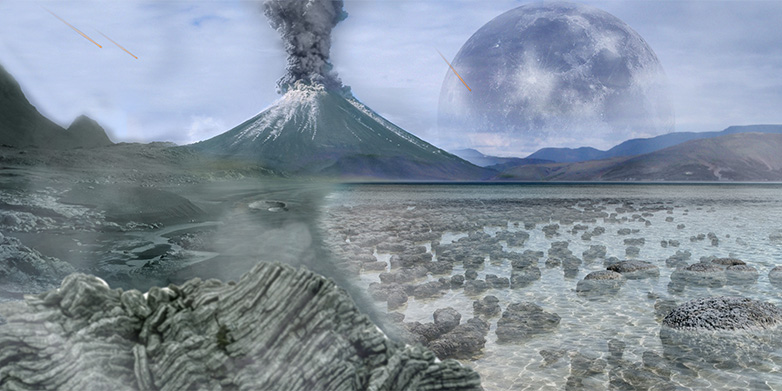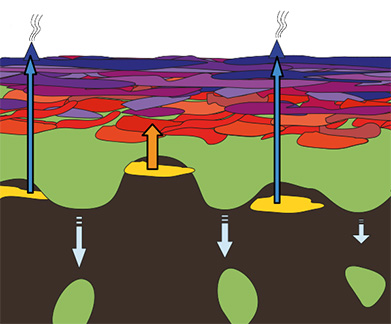Continental crust thanks to the right mixture
For the first time, ETH scientists have successfully recreated the formation of continental crust in the Archean using a computer simulation. The model helps us to better understand processes that took place three to four billion years ago.

The present-day formation of continental crust can be investigated in the framework of plate tectonics; however, it is unclear how continental crust could have formed in the Archean, a period three to four billion years ago, when there was no plate tectonics.
In the journal Nature, geophysicists led by Antoine Rozel, a senior assistant at the Institute of Geophysics at ETH Zurich, have now presented a computer model that is likely to add fuel to the scientific debate. With their model, they were able to recreate the origination of earlier continental crust for the first time, something which until now had proven particularly challenging.
Venus or Io?
For their computer model, the researchers took inspiration from two opposing explanatory approaches. One approach postulates that the Archean crustal material was built up through volcanic activity alone, as it has been suggested to happen on Jupiter's moon Io. The other approach, by contrast, assumes that new crust was formed by the accumulation of magma remaining warm in the crust might be the case on Venus.
The ETH researchers' simulations could not confirm either extreme position, since neither of the two approaches produces a continental crust that is composed as it should be based on field observations.
Temperature and pressure narrowly defined
"The rocks of the original continental crust could only form under relatively narrowly defined temperature and pressure conditions. In both extremes, these conditions do not exist," explains Rozel. "If a new crust is formed solely by volcanoes, whereby the magma cools immediately on the Earth's surface, the crust would be too cold. Conversely, the crust in the other approach would be hotter than it should be."

By contrast, the ideal situation is when the crust is created through a mixture of the two mechanisms, preferably when around 30 percent of the new crust is formed by volcanism. This results in a rock composition similar to what can be found on the west coast of Greenland, for example.
Two-dimensional and global
For the researchers to calculate their model, however, they had to make some compromises. Although their model is global, it is only two-dimensional. "If we had wanted a high regional resolution and a three-dimensional model, we would have had to run the calculations on a supercomputer for ten years," says Rozel.
In their model, the researchers considered various quantities, such as temperature, pressure, water content of the rock and its viscosity, and simulated the processes up to 100 times to test the parameters with various values.
Reference
Rozel A, Golabek GJ, Jain C, Tackley PJ, Gerya T. Continental crust formation on early Earth controlled by intrusive magmatism. Nature, AOP 9th May 2017. doi: external page10.1038/nature22042call_made

